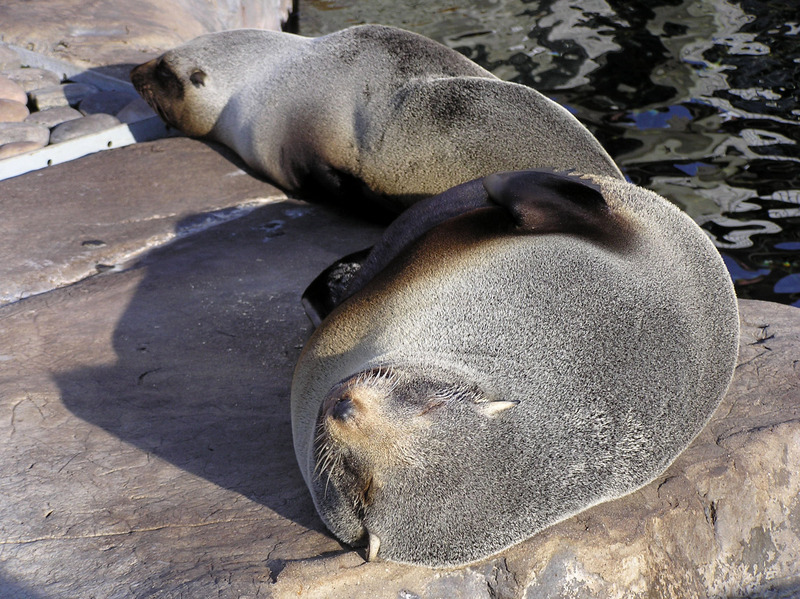|
| 질의: description | 결과: 9505번째/10150 | |
South American Fur Seal (Arctocephalus australis) - Wiki
| 제목: | South American Fur Seal (Arctocephalus australis) - Wiki
| |

| 해상도: 2288x1712
파일크기: 983755 Bytes
촬영일: 0000:00:00 00:00:00
사진기: C750UZ (OLYMPUS CORPORATION)
F number: f/3.2
Exposure: 10/4000 sec
Focal Length: 220/10
등록시간: 2007:12:21 09:43:39
|
South American Fur Seal
From Wikipedia, the free encyclopedia
Order: Carnivora
Suborder: Pinnipedia
Family: Otariidae
Subfamily: Arctocephalinae
[Photo] South American fur seals (Arctocephalus australis) at Bristol Zoo Gardens, England. Taken by user Yummifruitbat (http://commons.wikimedia.org/wiki/User:Yummifruitbat) in March 2005 using an Olympus C750UZ digital camera.
The South American Fur Seal (Arctocephalus australis) is a species of fur seal that breeds on the coasts of Chile and Argentina. The total population is around 250,000.
The population of South American fur seals in 1999 was estimated at 390,000, a drop from a 1987 estimation of 500,000. Although overall species numbers are healthy, the downward trend is causing some concern. Uruguay has the largest numbers of seals along its coast, numbering over 200,000.
Physical Description
The South American fur seal has a dark grey coat of fur. The males of the species are almost entirely this color, though they may have grey or tan grizzled markings. The females and sub-adult males have lighter grey or tan coloring on the chest and muzzle, and may have rust-brown or medium grey fur on their undersides. The muzzle is flat-topped and pointed, with a medium-sized nose. The nostrils are forward-facing and the nose extends past the mouth. The ear pinnae are long and prominent, and the vibrissae of adults are creamy white and of relatively short length. Adult males are larger than females, with a thicker neck and larger shoulders. Males also develop a mane of longer guard hairs on the head and shoulders. Size of the seals varies based on region but on average, adult males measure up to 2 m long and weigh 150-200 kg and females measure up to 1.5 m long and weigh 30-60 kg. Newborns are 60 to 65 cm and 3.5 to 5.5 kg.
Habitat
The South American Fur seal is found on neotropical ocean coasts from the Paracas Peninsula of southern Peru south to Cape Horn on the Pacific coast, and northward to southern Brazil on the Atlantic coast. They are also found on the Falkland Islands, Staten Island, and Escondida Island. Arctocephalus australis prefer rocky shores and islands, particularly those with steep slopes, which provide shady areas where they can escape the heat of the sun. They have been found in sea caves in Peru, where some climb up to 15 meters to find a spot to rest. Anatomical information for the southern fur seals Arctocephalus spp., is scant (W. P??rez).
The South American fur seal may be featured on the upcoming CBBC television programme Serious Ocean, in the Chilean Pacific region on the fur seal's range.
More Photos
http://commons.wikimedia.org/wiki/Arctocephalus_australis
http://en.wikipedia.org/wiki/South_American_Fur_Seal
| The text in this page is based on the copyrighted Wikipedia article shown in above URL. It is used under the GNU Free Documentation License. You may redistribute it, verbatim or modified, providing that you comply with the terms of the GFDL. |
|
^o^
동물그림창고 똑똑전화 누리집
^o^
|
|

